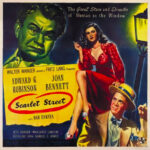While watching Give My Regards to Broad Street, it’s hard not to ponder the level of marijuana consumption by Paul McCartney during its creation. How else can one rationally explain the film’s overwhelming ’80s Eurotrash kitsch, exemplified by moments like the “Silly Love Songs” sequence, or the bizarre “Eleanor Rigby” rendition?
Although Peter Webb is officially credited as the director, rumors persist that McCartney seized control early in the production. The film’s lack of directorial coherence certainly lends credence to this theory. McCartney is also credited as the writer, though the script feels more like a collection of scribbled notes on a napkin than a cohesive narrative.
The “plot,” if it can even be called that, vaguely echoes the flimsy premise of A Hard Day’s Night. The protagonist, ostensibly McCartney himself, wanders through a film or TV studio, encountering costumed actors and extras. This chaotic backdrop serves merely as a loose framework for showcasing musical performances. One could argue that both films offer a commentary on the artificiality of showbiz. However, where A Hard Day’s Night triumphed over its narrative shortcomings with the infectious enthusiasm, charm, and wit of The Beatles in 1964, the 1984 McCartney appears devoid of these qualities. Instead, he ambles through garishly decorated, excessive sets in what feels like a drug-induced haze.
McCartney, along with the rest of the cast, including Tracey Ullman, Ringo Starr, Paul’s wife Linda, Ringo’s wife Barbara Bach, and Beatles producer George Martin, seem utterly uninspired. They project an air of boredom, as if collectively counting down the minutes until filming concludes. The film is purportedly a “dream within a dream,” and the performances certainly have a sleepwalking quality.
Despite its significant flaws, Give My Regards to Broad Street does offer a potent dose of trashy, kitschy ’80s nostalgia. For those with a penchant for the era’s aesthetic excesses, the film might hold a certain guilty pleasure appeal.


